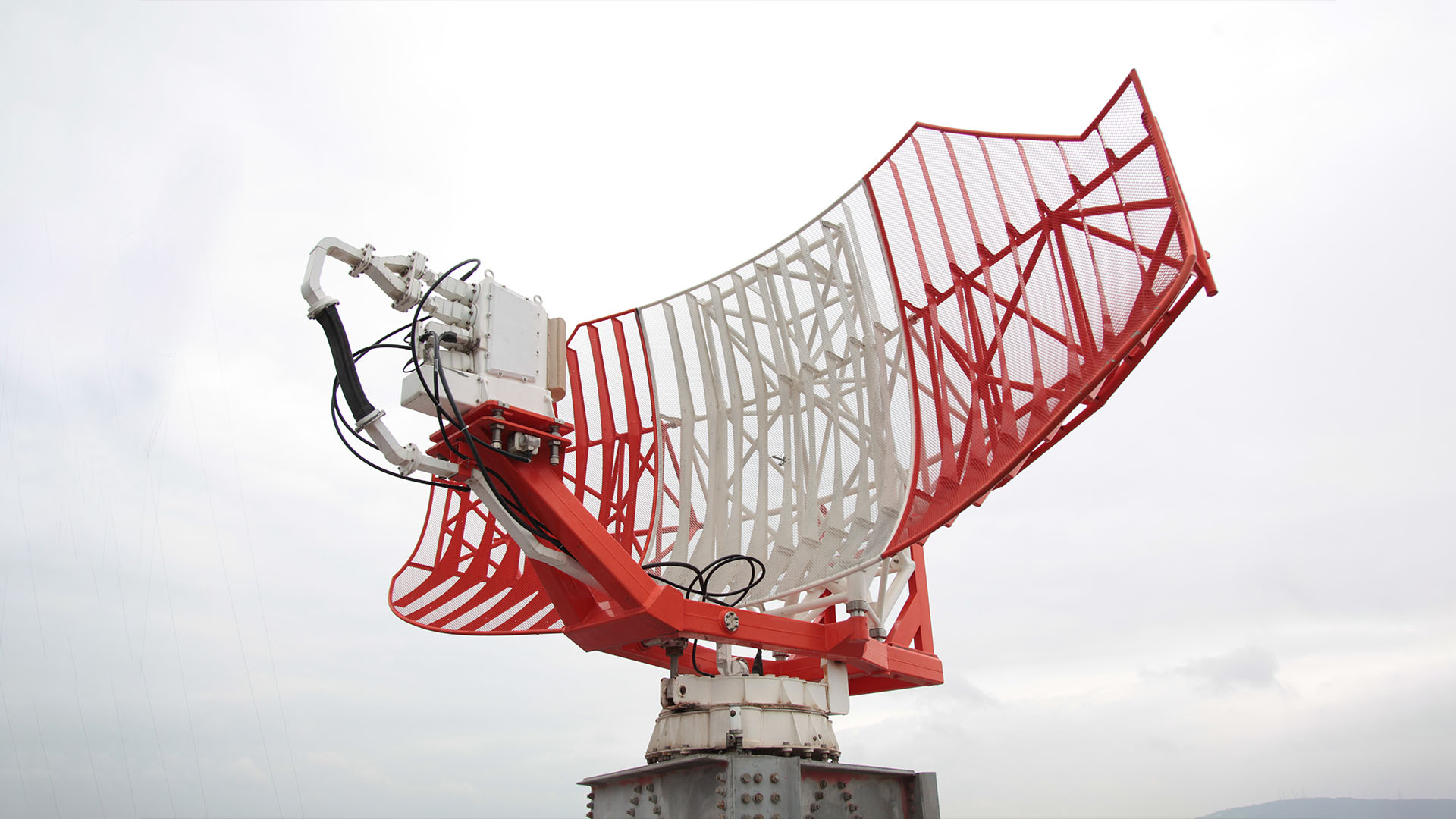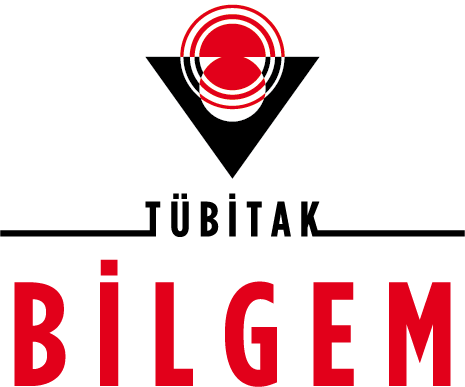BTE
Projects
The Completed Projects

Area Control and Approach / Road Control Radar Simulator (ATCTRSIM)

Passive Radar Development Project Passive Broadcast Detection System (PYAS)

National Surveillance Radar (MGR)

Speech and Language Technologies Center of Excellence E-Infrastructure Project (KDTM)

Forensic Image Enhancement and Repair Software (ION SUITE)

Real Time Operating System Automotive Adaptation (GIS-OTOMOTİV)
The OtherCompleted Projects
With the development of technology in recent years, the armies of many modern countries use electronic circuits and equipment intensively, especially in their vital systems such as air defense and military communication. It is possible to crash systems such as communications and data processing involving electronics with high power directed electromagnetic energy. In this case, having such a technology is of great importance in terms of gaining effective power and strategic superiority against a fully electronically modernized army in possible war situations. In this respect, it has become necessary to develop new technologies in order to develop systems that can create this effect in terms of both defense and attack. In this context, R&D activities were carried out for the following structures, which constitute the basic components of oriented energy systems with the VIRGEP Project:
• Impact shaping interface,
• Virkator high power microwave generator,
• High Power Microwave Antenna.
Proje kapsamında bir S-Bant Eşevreli Darbe Doppler Radarı (SDRAD) millî imkânlar ile geliştirilmektedir. Bu radar, KUŞRAD Projesi’nde hâlihazırda kullanılmakta olan ve yurt dışından tedarik edilen Yatay Tarama Radarı’nın tüm işlevlerini barındırmakla birlikte, ek olarak eşevreli (coherent) olma özelliğine sahip olmuştur. Radar, geliştirilip üretilmesinin ardından KUŞRAD Sistemi’nde kullanım için uygun hâle gelmiştir. Yanı sıra, küçük RKA’lı hava hedeflerinin (örneğin küçük İHA) tespitini gerektiren çeşitli uygulamalarda da SDRAD kullanımı mümkün olmuştur.
Within the scope of X-Band Antenna System Design Service Procurement (XBAST) Project, it is aimed to develop an X-Band Antenna System to be used in noise radars, completely in line with the needs and requirements of ARMERKOM.
Within the scope of the MMU Weather Detection WDF Project, it is aimed to develop an algorithm code with weather detection capability for the 5th generation TF-X to be produced for the National Combat Aircraft (MMU).
Savunma Sanayii Müsteşarlığı tarafından yürütülen Erken İhbar Radar Sistemleri (EİRS) Projesi kapsamında uzun menzilli radar sistemlerinin yurt içinde özgün olarak geliştirilerek üretilmesi öngörülmektedir. Proje kapsamında 2 adet taşınabilir ve 4 adet sabit konfigürasyonda radar Hava Kuvvetleri Komutanlığı tarafından belirlenen yerlere konuşlandırılarak, hava soluyan hedeflerin, taktik balistik füzelerin ve görünmezlik teknolojisine sahip hedeflerin uzun menzilden tespiti ve takibi amaçlanmaktadır. Bu proje kapsamında yer alan aşağıdaki iş paketlerinin TÜBİTAK BİLGEM tarafından gerçekleştirilmesi konusunda ASELSAN’a teklif verilmiştir:
1- IP-1: Algorithm development:
a. Bird Filter Development: Birds detected as targets within the radar coverage area will be detected, classified and filtered algorithms will be developed.
b. Elimination of Wind Turbine Impacts: It is aimed to identify, report, simulate and perform performance analyzes of method alternatives (hardware and algorithm) to reduce wind turbine impacts.
2- IP-2: Radar Coverage Analysis Software: It will be able to generate the 2D/3D coating diagram of the radar placed at a certain location for targets at different altitudes. While drawing this diagram, geographical environmental conditions, roundness of the earth, radar position information, operating parameters, target characteristics and operating modes will be taken into account. In addition, features such as section display, target detection analysis, negative impact analysis, antenna pattern display will be found.
HTR-EIRS Algorithm Development (ASR-EIRS) In Air Traffic Radar (HTR) and Early Warning Radar Systems (EIRS), algorithms are being developed to suppress the effects of turbine farms and bird flocks and to detect precipitation at six levels.
SSR Sistemlerine ait sinyal işleme alt sistemi gerçeklenerek tasarlanmış ve ADS-B Alıcı Sistemi’yle entegrasyonu tamamlanmıştır. Böylece uçaklara ait uçuş verilerinin kullanıcıya gerçek zamanda gösterimi yapılabilmektedir. Üç ay süreli kayıt ve istatistiksel gösterim yapılabilmektedir.
Within the scope of the R&D Project initiated with the State Airports Authority (DHMI), KUŞRAD was developed to detect and monitor the migratory birds hovering in critical areas around the airports affiliated to DHMI, to evaluate them in terms of flight safety and to determine the most suitable time zones for scheduled flights. The developed system was installed at the International Atatürk Airport and the field acceptance tests were completed.
The Mobile Coastal Surveillance System (MSGS) is a long-range portable surveillance radar/sensor system developed by our Institute for the detection and tracking of targets on the sea surface.
S bandında Verici Alıcı Modülü (Transmitter Receiver Module / TRM) temini ve tasarımı, geliştirilen 8×1 düzlemsel dizili yapı temel alınarak yapılan 8×8’li anten tasarımı, fizibilite etütleri, sistem mühendisliği ve mimari tasarımı hedeflenmiş ve uygulanmıştır.
The Foreign Object Detection System (FODRAD) is a mm-wave radar system that detects foreign material residues (Foreign Object Debris/FOD) on the runway at airports and warns the operator, and displays the location of the debris on the runway and the camera image in real time. FODRAD is the first FOD Detection Radar in our country and was developed within the framework of the R&D cooperation between DHMI and TUBITAK. The system includes 4 mm-wave radars and 4 day/night optical sensors. It is aimed to prevent accidents caused by YAMAHA (Foreign Object Damage) with the FODRAD System, which performs 24/7 continuous automatic surveillance, provides command and monitoring from a single center, and produces reports by recording statistical information.
Within the scope of the ASR Project carried out by the Undersecretariat of Defense Industries, an air traffic surveillance radar and traffic control system were developed, produced and installed for the Air Force Command. The following work packages within the scope of this project were carried out by our Institution:
• IP-RTEA: Wind Turbines Mitigation Algorithms
• IP-LCCA: Precipitation Prediction Algorithms
Within the scope of the High Power Microwave Systems (YÜGEM-SIS) Project, the design, production and testing of the receivers and other peripheral components required for the measurement of high amplitude current or voltage signals that change abruptly over time are carried out. From the produced receivers;
• Capacitive voltage divider: Measuring high voltage pulses with amplitude up to 500 kV and rise time more than 20 ns,
• Rogowski ring: It is capable of measuring currents with an amplitude of several hundred kiloamps and a rise time of microseconds.
Within the scope of the Antenna Test and Research Center (ATAM) Project, the following activities were carried out:
• Establishment of the center, which will provide accurate and reliable measurements for the electromagnetic, antenna and radome needs of our country,
• Providing measurement services for design and improvement purposes in parallel with research and development activities.
The infrastructure enables the measurement and analysis of the parameters of all kinds of antennas up to 6 meters in size and weighing up to 4 tons, and the indoor radar cross-section of objects up to 10 meters in diameter.
KATOT Geliştirme (KAGEP) Projesi’nin amacı, yüksek güç mikrodalga vakum elektronik cihazların elektron kaynağı olan dispenser katot geliştirmeye yönelik Ar-Ge çalışmaları yapmak ve prototip üretimini gerçekleştirmektir.
KATOT ve Mikrodalga Vakum Tüp Araştırma Merkezi (KAMTAM) Projesi ile Kalkınma Bakanlığı ve Kurum’umuz destekleri ile TÜBİTAK Gebze Kampüsü’nde KATOT ve Mikrodalga Vakum Tüp Araştırma Merkezi altyapısı kurulmuştur. Bu altyapıda yürütülecek Ar-Ge faaliyetleri kapsamında, başta Uydu Haberleşmesi olmak üzere, Elektronik Harp, Yüksek Güç Radar ve Medikal Cihaz uygulamalarında kullanılan Yüksek Güçlü Mikrodalga Sistemler için kritik teknoloji özelliği taşıyan Mikrodalga Vakum Tüp cihazları ve alt bileşenleri tamamen millî imkânlar ile tasarlanıp geliştirilerek ülkemize stratejik bir üstünlük kazandırılacaktır. KAMTAM altyapısı, Yüksek Güçlü Mikrodalga uygulamalarına yönelik Türk Silahlı Kuvvetleri (TSK) ihtiyaçları ile Ar-Ge projeleri arasında köprü vazifesi görecek bir mekanizma olarak faaliyet gösterecektir. “Kritik Teknoloji” sınıfında kabul edilen Mikrodalga Vakum Tüp teknolojisine yönelik katma değeri yüksek ürünlerin tasarlanarak geliştirilmesiyle ülkemizin küresel rekabet gücü artırılacaktır. Ayrıca altyapı bünyesinde gerçekleştirilecek teknolojik faaliyetler ile söz konusu teknolojiye yönelik araştırma kültürünü özümsemiş insan gücünün yetişmesine imkân sağlanacaktır. Kamu kuruluşları, üniversiteler ve savunma sanayi şirketleri ile beraber yürütülecek projelerle birlikte ülkemiz için son derece kritik olan bir teknolojide ortak kullanım ile toplam maliyet düşürülecek ve kurumların bir araya gelmesi ile ortak akıl ve sinerji sağlanmış olacaktır.
Bu projede mevcut MGR Sistemi’nin alış ve veriş kanallarının yedeklenmesi amaçlanmaktadır. Bu sayede herhangi bir arıza durumunda sistem yedek kanala geçecek ve yedek kanal üzerinden sağlıklı bir şekilde çalışmasını sürdürecektir. Bu esnada çalışmada herhangi bir kesinti olmadan arızalı birimlerin değişimi/tamiratı yapılabilecektir.
Feasibility Project on Increasing Recovery in Petroleum Reservoirs by Microwave Heating Method was carried out by our Institution and TP Research Center. Although oil is found in our country, very large reservoirs cannot be put into production efficiently due to the low fluidity of oil. In order to utilize these areas, one of the various recovery enhancement methods is to heat the oil and increase its fluidity.
Since the heated oil is more fluid, its production has become easier and the majority of our country's oil needs have been met with our own production by ensuring the production of oil reservoirs that we could not use effectively.
Since most of the heating methods cause structural deterioration in the oil due to sudden heating and high temperature, microwave heating methods are being tested as an efficient heating method that will protect the structure of the oil and studies are being carried out for the needs of Turkish oil.
It is aimed to design and develop New Generation E-Band Radio Link devices that can be used in existing GSM and Telecom infrastructure networks and have the ability to carry very high speed packet data that will be needed when switching to LTE/4.5G/5G networks. Within the scope of the project, the product named SRC400 was designed, developed and industrialized.
Supervision of the production of the New Generation SRC155A Radio device, which has the capability of carrying high-speed mixed data, which is produced by industrialization through SMEs, guarantees of the devices sold directly, system training, and technical support of all manufactured devices to the customer were provided.
The project aimed to design and develop Next Generation E-Band Radio Link devices that can be used in existing GSM and Telecom infrastructure networks and have very high speed packet data transportation capability that will be needed when LTE/4.5G/5G networks are switched to. Within the scope of the project, the SRC400 product was designed, developed and industrialized. Preliminary design and preliminary prototype studies were carried out for E-band Radio Link.
The Defence, Aerospace Research and Technology Projects Identification, Planning and Control System (SARGES) Project was targeted and implemented by the Ministry of National Defence as a set of decision support systems that will enable a vision that will aim to determine the situation and needs related to technology areas, and to effectively direct resources to technological developments of critical and national importance, with information to be obtained from various data sources in line with the taxonomy of defence technologies, the classification of which has been completed and determined down to the lower levels.
Within the scope of the Disaster Management Support System (AYDES) Project, Remote Sensing Software and Crowdsourcing Platform, which performs the analysis of remote sensing data obtained from the disaster area with automatic / semi-automatic methods in order to realize AFAD's rapid damage assessment after the disaster, were realized. Within the scope of the project, R&D studies will be carried out for the use of Synthetic Aperture Radar (SAR) data. Especially in disaster situations where atmospheric conditions such as cloud/fog are unfavorable, it is aimed to use SAR data, which is not affected by these conditions, in damage and impact analysis processes.
TÜBİTAK BİLGEM destekli, Kamu Kurumlarında Etkin Elektronik Belge Yönetimi ve Paylaşımı için Ulusal Teknolojilerin Geliştirilmesi (E-BELGEM) Projesi’nin geliştirilmesiyle amaçlananlar aşağıdaki gibidir:
• Fast and reliable transfer of archive documents to electronic media,
• Management in electronic environment,
• Full text search with optical character recognition,
• Sharing with other institutions.
Customs Gates Security Systems (GÜMSİS) Project was carried out for the General Directorate of Customs Enforcement in order to monitor and prevent illegal goods, vehicle and human traffic at customs gates. First of all, CCTV Systems were installed at the land border gates and ports to increase the security in the customs areas. Within the scope of the project, a license plate reading system was developed for the first time in Turkey to automatically read license plates, and the system was implemented on domestic and foreign license plates at the land border gates with five different countries. The first GPRS-based vehicle tracking system application in our country was realized within the scope of the project, and the transit trucks and tankers carrying fuel were monitored by automatic alarms defined to prevent smuggling. With the X-Ray TIR and Container Scanner Systems, which were consulted, purchased and installed within the framework of the project, the passage of illegal goods was significantly prevented. The communication between the customs gates and the center has been secured by encryption with IP crypto devices, and the integration of the software used in the fields has been ensured.
The Digital Recording, Archive and Analysis System (SKAAS) is a versatile, modular, integrated, expandable and stable system that has been used by the Radio and Television Supreme Council (RTÜK) for over ten years.
Digital Recording, Archive and Analysis System (SKAAS) Competence and Features:
• It archives all encrypted and unencrypted television and radio broadcasts broadcast over satellite, cable, terrestrial and IPTV platforms in the desired format and resolution.
• It performs analysis on huge amounts of archived audio and video data or live broadcasts.
• With the analysis algorithms developed using deep learning methods, it can make appropriate queries by making sense of the data.
• Supports operators' decisions and business processes by using analysis algorithms and management tools.
• Open source operating systems (CentOS, Ubuntu and Mint) are used.
• The software has been developed using tools such as C/C++, python and QT.
• PostgreSQL is used as database.
• 3PT+ archive system is used in NAS architecture.
• 10 GB bandwidth network infrastructure is used.
• Virtualization is used in the cluster structure for management servers.
UASİS kapsamında Türkiye’nin ihtiyaçlarına özel olarak oluşturulacak 4 seviye ve yaklaşık 70+ sınıflık bir Arazi Örtüsü/Kullanımı Sınıflandırma (Land Use Land Cover Classification (LULC) and Monitoring) Sistemi’nin geliştirilmesi amaçlanmaktadır. Proje ilk aşamada fizibilite projesi olarak İDARE tarafından başlatılmıştır. UASİS kapsamında uzaktan algılama/yardımcı veriler geldikçe sınıflar arası değişimin izlenebildiği bir sistemin oluşturulması da hedeflenmektedir.
Sayısal Kayıt, Arşiv ve Analiz Sistemi (SKAAS) Projesi kapsamında, mevcut SKAAS Projesi’ne yapılacak ilaveler ve değişikliklerle, 2008 yılından beri 7/24 işletilmekte olan sistemin, yayıncılık ve bilişim teknolojilerindeki gelişmeler neticesinde ortaya çıkan ihtiyaçlarının karşılanması ve RTÜK’ten yayın izni alan TV yayıncı kuruluş sayısının artması nedeniyle, SKAAS TV Sistemi’nin yenilenmesi ve kapasitesinin arttırılması amaçlanmaktadır. SKAAS, bu alandaki geniş bilgi birikimi kullanılarak geliştirilmiş ve on yılı aşkın bir süredir Radyo ve Televizyon Üst Kurulu (RTÜK) tarafından kullanılan çok yönlü, modüler, tümleşik, genişleyebilir ve kararlı bir sistem olarak varlığını sürdürmektedir.
Digital Recording, Archive and Analysis System (SKAAS) Competence and Features:
• It archives all encrypted and unencrypted television and radio broadcasts broadcast over satellite, cable, terrestrial and IPTV platforms in the desired format and resolution,
• Performs analysis on a large amount of archived audio and video data or live broadcasts,
• Ability to make sense of data and make appropriate queries with analysis algorithms developed using deep learning methods,
• Supports operators' decisions and business processes by using analysis algorithms and management tools,
• Developed using open source operating systems (CentOS, Ubuntu and Mint),
• Software has been developed using tools such as C/C++, python and QT,
• PostgreSQL was used as database,
• 3PT+ archive system is used in NAS architecture,
• 10 GB bandwidth network infrastructure is used,
• Virtualization is used in the cluster structure for management servers.
Sesten Çeviri Motoru (SEÇİM) Projesi’nde TV haber programlarının ve telefon görüşmelerinin otomatik yazıya dönüştürülmesi ve bunlar ile diğer haber metinlerinin, yanı sıra forum, blog vb. internet metinlerinin Türkçeye otomatik tercüme edilmesi hedeflenmektedir. Bu kapsamda;
• A wide-ranging Arabic speech recognition and Turkish translation system for Arabic television news programs,
• A large vocabulary Arabic speech recognition and Turkish translation system for Arabic phone calls,
• Translation system into Turkish for Arabic news texts,
• Turkish translation system for Arabic forums, blogs, etc.
Türkçe Ses Verisi İnceleme Motoru (SEVİM) Projesi’nde sesli verilerin otomatik yazıya dökülmesi, ses verilerinde konuşmacı tanıma, takip ve bölütleme yapılabilmesi, anahtar kelime ve kelime öbeklerinin aranabilmesi hedeflenmektedir.
In this context it is aimed to develop auxiliary tools such as:
• Wide-ranging speech recognition system for telephone and radio-television broadcasts,
• A speaker verification system that makes identification by comparing the voice recordings of a single speaker with the speakers registered in the system,
• A speaker tracking system that tags the places where a registered speaker speaks in a given audio file,
• A speaker segmentation system that segments a file containing many speakers who are not registered in the system according to the speakers,
• A keyword capture system was developed that searches for phrases in telephone and radio-television data and retrieves the files and places where these words occur.
Bulut Bilişim ve Büyük Veri Araştırma Laboratuvarı (B3LAB – BTE) Projesi kapsamında, Bulut Bilişim ve Büyük Veri Araştırma Laboratuvarı kurulumu gerçekleştirilmiştir. Bu laboratuvar sayesinde;
• Conducting advanced research in cloud computing and big data fields,
• Leading the development of products needed in this field with domestic resources,
• Providing the opportunity to conduct research and receive consultancy for the stakeholders who will work in this field,
• Contributing to the formation of the Cloud Computing ecosystem
has been carried out.
Common City Design Platform C3PO is a project that helps users to make quick decisions by using visualization and simulation tools for urban design and transformation, and enables the visualization of the decisions taken by simulating them. Our institution is a stakeholder of this project.
Consultancy was given to the Ministry of Food, Agriculture and Livestock (GTHB) Information Processing Department for the purpose of preparing a feasibility report to be submitted to the Ministry of Development on “Establishment of Corporate Information and Communication Technologies Infrastructure and Establishment of Agriculture Cloud Computing”.
The top priority data type used for damage analysis and damage assessment in disaster management is aerial and satellite images of disaster sites. The use of remote sensing data allows the observation and analysis of much larger areas in a short time compared to other data types.
The most important output of the damage analysis and assessment process is the reporting of the damage levels after the disaster using the analysis methods specialized for each disaster type, using the aforementioned remote sensing data. For this purpose, remote sensing data/images are analyzed with scientific methods in different disciplines and the meaningful information obtained creates input for decision makers and decision support systems on thematic maps.
It is aimed to develop an open system video management system prototype in accordance with standards and trends, which helps to demonstrate our software and analysis capabilities obtained in Video and Broadcast Analysis Systems projects. Thanks to the ONVIF standard, it is possible to use video system components of different brands in a single video management system. Project scope includes IP configuration, Device management, Add device, Media configuration, PTZ control, Real-time monitoring, Video surveillance, Video analytics etc. research and development will be carried out.
It was aimed and implemented to gain knowledge about technologies, algorithms, cameras and video surveillance system components used in video management systems and to increase personnel competencies.
In the last five years, interest and needs in acoustic surveillance have started to increase rapidly in our country. The Acoustic Surveillance Systems Infrastructure Laboratory (AGS) aims to provide infrastructure support for R&D studies to meet the needs arising from this rising interest. AGS Infrastructure Laboratories aim to carry out all the activities necessary for the development of acoustic surveillance systems, which have only recently begun to be widely used in the world, in our country:
• To make device, equipment, campus infrastructure installations related to acoustic detection, diagnosis and positioning technologies,
• To establish standard test setups for validating existing and developing systems,
• To take an active role in the establishment of standards regarding acoustic surveillance in our country and to cooperate with national and international institutions operating in this field,
• To determine the types of sensors (such as acoustic sensor types, optoelectronic-based laser Doppler vibrometer) and structures (such as sensor arrays and geometries, single and distributed systems) to be used in acoustic surveillance systems,
• To arrange the necessary infrastructure, test scenarios and creating sound libraries for threatening elements and anomalies such as weapons, bombs, screams, crowd noise and vehicles (manned/unmanned aerial vehicles, work machines),
• To report the needs analyzes of the institutions responsible for the security of our country, which will benefit from the data and standards produced by the laboratory, to prepare cooperation protocols and put them into practice.
Within the scope of the Multi-Purpose Sensor Array for Acoustic Positioning (AKSES) Project, acoustic threats ( An Acoustic Surveillance (Surveillance) System Prototype has been developed with the capabilities of detecting, diagnosing and positioning (such as gunshot, UAV, explosion).
With the project, it is aimed to design and develop prototypes of an electronic drill training system covering open field training at different scales. Within the scope of the project, a system that is designed to be attached to real equipment and a system that is included in the trainings already carried out has been planned. As a result, a system has been designed that enables critical information to be controlled and recorded from a central point for all types of elements included in the exercise training.
In the operation of the system, it is planned to record critical information such as hit/shot, time-dependent location information and hit rates of elements such as personnel and vehicles in the field by transferring them to a command and control center over a wireless network. Following the exercise trainings, a platform is being designed that allows analysis to be made on the recorded data.
Another important field of study is the development of hybrid training suit and laser weapon module created with Infrared and Visible Laser Transmitter-receivers, which are designed to be able to work during long exercise trainings in open field conditions. In this context, taking into account long working times and complex network topologies, integration studies are carried out on the basis of Internet of Things (IoT) protocols and modules.
With the establishment of the High Frequency Maritime Radar Application and Research Laboratory (YF-DENRAL), an infrastructure has been established that will raise our country from a position of being dependent on foreign technology and following technology to an independent and technology-producing position in the field of YF Maritime Radars, which are systems that cannot be used effectively in our country at the moment, and which can monitor and record all data regarding the state of the seas and maritime activity within our exclusive economic zone.
The aim of the project is to establish the infrastructure for the field required for the high frequency radar, which is aimed to be developed in line with the request of the Naval Forces Command, which will be capable of surveillance, detection, identification and monitoring of naval platforms at over-the-horizon ranges and partially behind the island, to increase experience in data collection and to conduct analyses on the data obtained.
DG systems, which automatically suppress the magnetic trace created by warships, are designed and produced locally and tested on the ship, and the systems produced are already used on many ships.
Ten sets of temperature, voltage, current and main boards of the Submarine Battery Monitoring System (SBCMS) used in AY Class Submarines were produced as spare and delivered to the customer.
The National Real-Time Operation GİS, whose development work started in September 2006 with the support of TÜBİTAK SAVTAG, successfully passed the tests and became a product in January 2013. Developed in accordance with the requirements of DO-178, GİS supports ARINC653 profiles used in aviation and POSIX profiles for general use. With its features and scalable layered structure, it can be used as an operating system in embedded computers in Defense, Aviation, Space, Automotive, Rail Transportation, Nuclear Power Plants, Medical Electronics and many other sectors.
The Digital Plotting Desk is a computer-based system that will be deployed in the war operations center and can be used for tactical and navigational information needs. It allows the navigational information of our own warship and targets to be displayed, tracked and plotted on the digital map. The Digital Plotting Desk displays the position, speed, direction and route information of our ships on the screen by taking them from the navigation sensors. Along with the ship's position, contact information received from the navigation radar can also be viewed on the screen. The system uses digital maps in the form of S−57 and S-63. All information from the sensors is presented on the map image at their actual location. Digital Plotting Tables produced by BİLGEM are actually used on more than 20 platforms.
Underwater Telephone (SATEL) is a microprocessor-controlled communication system that provides communication between surface/underwater ships via underwater acoustic waves. The system can send and receive audio signals over the transducer. Communication can be done in two ways: telephone and telegraph. Various types of Underwater Telephones produced by our institution are actually used on more than 30 platforms, including fixed for surface combat ships and portable for rescue ships. The new version, which is being developed for submarines, can send and receive audio signals over 3 selectable transducer groups.
Unmanned Mine Detection Vehicle (IMTA) performs the remote detection of mines or explosives on the route. With this feature, the product designed by our institution aims to minimize the risk of loss of life in the field. IMTA is the first in the world with its multi-channel and simultaneous EMI/GPR technology.
Within the scope of the Passive Radar System (PARSİS) Project, it is aimed to detect, analyze, classify, position and track the signals broadcast from the radars on the target platforms.
Ten sets of temperature, voltage, current and main boards of the Submarine Battery Monitoring System (SBCMS) used in AY Class Submarines were produced as spare and delivered to the customer.
Denizaltı Batarya Fabrikası Veri İzleme Sistemi (VERİSİS), Denizaltı Batarya Fabrikası’nda üretilen bataryaların formal şarj/deşarj işlemleri esnasında 240 adet bataryanın yoğunluk, sıcaklık ve gerilim değerlerini ölçüp elde ettiği verileri kablosuz ortamda ölçüm bilgisayarına aktarmaktadır. Bilgisayardaki yazılımla sensör verileri toplanmakta, hata mesajları kontrol edilmekte ve veriler saklanmaktadır.
An underwater telephone was produced for the TCG Büyükada corvette, developed within the scope of the MİLGEM Project, and delivered to the customer following the factory acceptance test, and support was provided for port and sea acceptance tests.
The project includes the creation of a magnetic trace model for the 3rd and 4th ships that will be designed and built within the scope of the MİLGEM Project, and the design and production of a system that will automatically suppress the magnetic trace created by the ship and its installation on the ship. The system provides an effective defense against magnetic mines by automatically updating the area it has created according to ship movements.
The project includes the creation of the magnetic trace model of the corvette-type Büyükada ship, which was designed and built within the scope of the MİLGEM Project, and the design, production and installation of a system that will automatically suppress the magnetic trace created by the ship. The system provides an effective defense against magnetic mines by automatically updating the area it has created according to ship movements.
Within the scope of the MOSHIP/KURYED Project, a total of 6 underwater phones were produced to be used on three rescue and towing ships and delivered to the Customer following the factory acceptance test, and support is provided for port and sea acceptance tests. It has the same features as the underwater phones produced within the scope of the MİLGEM Project, and the SONAR interface differs.
In addition to the 8 underwater telephones produced for the Turkmenistan Border Department within the scope of the SGSB Project, 2 more Underwater Telephones were produced and delivered to the customer following the factory acceptance test, and support is provided for port and sea acceptance tests. It has the same features as the underwater phones produced within the scope of the YTKB Project.
The project aims to develop and verify the Digital Plotting Desk, which will be included in the standard equipment of Turkmenistan Serhet Class ships, and to produce 10 units for Serhet class ships, together with port and sea tests. The project has been successfully delivered.
The project aims to develop and verify the Digital Plotting Desk (DRT Desk), which will be included in the standard equipment of New Type Patrol Boats, and to manufacture 16 units for YTKB Class ships, together with port and sea tests. The project has been successfully delivered.
Within the scope of the New Type Patrol Boat Underwater Telephone Production (YTKB SATEL) Project, a total of 16 underwater telephones to be used in a total of 16 patrol boats were delivered to the customer following the factory acceptance test, and support is provided for port and sea acceptance tests. YTKB SATEL has features designed based on the underwater telephone system produced within the scope of the MİLGEM project and derived according to the project needs.
Proje, savunma sanayisinde kullanılmak üzere geliştirilen Emniyet Kritik Gerçek Zamanlı İşletim Sistemi’nin yeni teknolojileri desteklemesi için yapılması gereken çalışmalara destek olacak yazılım, donanım, eğitim, danışmanlık, insan kaynağı yetiştirme ve fiziksel ortam ihtiyaçlarını karşılamak üzere tanımlanmıştır. Bu bağlamda Gerçek Zamanlı İşletim Sistemi’nin her yıl için yeni bir işlemci mimarisini desteklemesi hedeflenmektedir. Bu amaç doğrultusunda ihtiyaç duyulan hizmetler tedarik edilecektir.
Yeni teknolojileri destekleyecek Gerçek Zamanlı İşletim Sistemi’nin test ve entegrasyon otomasyonunu sağlamak için gerekli olan yazılımların temin ve kurulumları proje imkânları ile sağlanacaktır.
The laboratory to be created will have the opportunity to perform comparison activities with existing real-time operating systems.
It is also aimed to provide undergraduate / graduate / doctorate students with the opportunity to research on the subject and to train qualified human resources for the sector by establishing laboratories with samples of the products developed with the project opportunities of Gebze Technical University, Boğaziçi University and Istanbul Medipol University.
Proje kapsamında, Gerçek Zamanlı İşletim Sistemi’nin kullanımına yönelik sektöre verilen eğitimlerin ve dahi üniversite öğrencileri için düzenlenen yaz okulu etkinliklerinin gerçekleştirilebileceği bir eğitim ve seminer salonunun kurulması da hedeflenmektedir.
The activities targeted by the internal source (GIS ÖZGÜNHELİ Project) have been determined as follows:
• Özgün Helikopter için ihtiyaç duyulan Gerçek Zamanlı İşletim Sistemi’nin geliştirme çalışmalarını devam eden Özgün Helikopter Projesi’nin takvimine uygun şekilde yürütmek,
• Yıl sonuna kadar Özgün Helikopter Projesi’ne dâhil olmak,
• To ensure the operation of GIS in the flight control and mission computer of the helicopter,
• To enter civilian certification (DO 178C) with the helicopter.
The Aircraft Tracking System, which was developed to support the flight safety of aircraft such as helicopters flying at low altitudes and to contribute to reaching the aircraft as soon as possible in emergency situations, aims to create a new version of the system with its features improved and enriched in line with user feedback.
Proje kapsamında mevcut Hava Aracı Takip Sistemi’ne talep edilen özellikler kazandırılmış olacaktır:
1. MIL-STD-1553B bus interfaces
2. Hardware crypto
3. Built-in GPS receiver
4. Bidirectional satellite communication,
5. 4G GSM communication,
6. Video/Image Transfer
METEKSAN Savunma AŞ, SSM kaynaklı AKYA Torpido Projesi’nde ana alt yüklenici olarak rol almaktadır. AKYA Akustik Başlık Projesi kapsamında METEKSAN’ın yükleneceği AKYA Torpidosu Akustik başlığına ilişkin aşağıdaki isterler gerçekleştirilmiştir:
• Torpedo Conceptual Design Studies,
• Torpedo Sonar Algorithm Development and Torpedo Sonar Console Graphical Interfaces,
• Torpedo Acoustic Head Hardware Cycle Simulator Development.
Within the scope of the Submarine Warfare Game Simulation Infrastructure (DEHOS-2) Project, a joint proposal was prepared with TÜBİTAK BİLGEM, Koç Bilgi ve Savunma (Information and Defense) Inc., SİMSOFT and HAVELSAN and an application was made to TÜBİTAK SAVTAG.
Denizaltılarımız için Millî Savaş Yönetim Sistemi’nin geliştirilmesine yönelik ilk adımların atılması hedeflenmektedir. Denizaltı Millî Savaş Sistemi (DMSS) Projesi kapsamında ara katman yazılımı, hedef hareketleri çözümlemesi, güdümlü mermi konsolu, akustik ve akustik olmayan sensörler için sistem mühendisliği, sonar değerlendirme aracı, torpido teknolojileri, sanal kuvvetler çatı yazılımı ve iz masası konuları çalışılmıştır.
Denizaltı Taktik Simülatörü-Garanti (DATAS-G) 2014 yılı içerisinde tamamlanan dış destekli DATAS Projesi’nde kalan işleri tamamlamak üzere açılmış bir iç destekli projedir.
Denizaltılar İçin Akustik Aldatıcı Sistemi – Yazılım Birimleri (DAKA-Y) Projesi kapsamında, torpido tehdidi altındaki denizaltıların veya su üstü gemilerin sakınma taktiklerini tanımlayabileceği ve bir senaryo çerçevesinde koşturabileceği yazılım ortamı geliştirilmiştir. Bu ortamda hazırlanan başarılı taktikler gemilerdeki Karar Destek Sistemi taktik veri tabanına yüklenecektir. Karar Destek Sistemi, gemiden aldığı gerçek zamanlı bilgileri kullanarak torpidodan sakınmak için uygulanabilecek en uygun taktikleri gemi komutanına tavsiye edecektir.
IPS – Intersept Kerteriz ve Mesafe Tespit Sonarı Geliştirme Projesi kapsamında, temel ve gelişkin özellikte intersept sonarlarının tasarlanması, geliştirilmesi, üretilmesi ve testlerinin yapılarak Deniz Kuvvetleri Komutanlığı bünyesindeki Ay ve Preveze/Gür Sınıfı denizaltılara entegrasyonunun gerçekleştirilmesi amaçlanmaktadır. Bu kapsamda, su altı akustiği, akustik sensör ve sensör dizinleri ve akustik sinyal işleme konularında Ar-Ge çalışmaları gerçekleştirilmiştir. Geniş bantlı akustik alıcı dizinleri ile ön elektronik birimleri, gerçek zamanlı akustik sinyal işleme sistemleri ve intersept sonar gemi içi birimleri tasarlanarak kullanıcı dostu grafik konsol arayüzleri geliştirilmiştir.
In underwater acoustic sensor and system development studies, pre-implementation simulation and testing are of great importance in terms of product performance. It is of great importance to determine and test the sonars to be designed and built to what extent they meet the operational and usage requirements. In order to meet the needs specified within the scope of the project, it was aimed and realized to develop a modeling environment and software that enables the definition of realistic acoustic environment, acoustic sources and acoustic sensors and works within a scenario.
Within the scope of the R&D Project completed by the State Airports Authority (DHMI), the Aircraft Tracking System was developed, which supports the flight safety of aircraft such as helicopters flying at low altitudes and ensures that the aircraft can be reached as soon as possible in case of emergency.
KONSEY-2 Projesi ile, KONSEY-1 Projesi’nde teslimatı yapılan Personel Yönetim Sistemi (PYS), Uzaktan Sınav Sistemi (USS), Uzaktan Eğitim Sistemi (UES) ve Hava Trafik Kontrolörü Seçim Sistemi (atcSES) yazılımlarının güncellenmesi ve bunların DHMİ bünyesinde görev yapan diğer personel gruplarının kullanımını da destekleyecek şekilde geliştirilmesi hedeflenmektedir.
Müze Ulusal Envanter Sistemi (MUES) Projesi’yle müzelerdeki eserlerin sürdürülebilir bir yönetim modeli ile korunması ve müzelerin verimli bir biçimde işletilmesi amacıyla müzelerde bulunan kültür varlıklarının web tabanlı bir yazılım ile kayıt altına alınması ve envanter üzerinde gerekli raporlama ve sorgulamaların yapılması sağlanmıştır. Geliştirilmekte olan laboratuvar modülü ile de Kültür Varlıkları ve Müzeler Genel Müdürlüğü bünyesinde görev yapmakta olan Restorasyon ve Konservasyon Bölge Laboratuvarı Müdürlüklerince yürütülen, eserlerin restore edilmesi, koruma altına alınması, bakım ve onarımı gibi yürütülen iş ve işlemlere ait bilgilerin web tabanlı bir yazılım ile kayıt altına alınması, bilgilerin ortak bir platformda tutulması ve işlemlere yönelik gerekli raporlama ve sorgulamaların yapılması amaçlanmaktadır.
The following items are targeted with the MUES Project:
• To be a national data bank where detailed information about the works in all our museums will be kept,
• To search for artificial intelligence-based visual content,
• To assist in the detection of smuggling and counterfeit works,
• To accelerate decision making processes as a decision support system,
• To protect artifacts against damage and risks by using digital media,
• To provide a national and standardized metadata model for artifacts and museums.
Necessary consultancy services were provided for the improvement of Roadside Inspection Stations and Software within the body of the General Directorate of Highways (KGM). In this context, necessary analyzes and software tests were carried out, and solution suggestions were determined and this report was prepared as a report.
With the Laboratory Module, which is planned to be developed within the scope of the Museum National Inventory System (MUES) Project, it is aimed to record the information about the works and operations carried out by the Regional Directorates of Restoration and Conservation Laboratories within the General Directorate of Cultural Heritage and Museums, such as restoration, conservation, maintenance and repair of artifacts, with a web-based software, to keep the information on a common platform and to make the necessary reporting and queries regarding the transactions.
Ülkemizin Akıllı Ulaşım Sistemleri (AUS) vizyonunu, misyonunu ve stratejik amaçlarını ortaya koyan Ulusal Akıllı Ulaşım Sistemleri Strateji Belgesi’nin güncellemesi ve 2018-2020 Eylem Planı’nın hazırlanması projesidir.
Within the scope of the Intelligent Transportation Systems Infrastructure [AKAY-3 (AUSAY)] Project, a communication network will be established to enable the development of algorithms and applications related to driver support and safety systems, traffic management systems, electronic toll collection systems, accident and emergency management systems, and to enable anonymous information sharing between vehicles (V2V) and infrastructure (V2I). In addition to algorithm development activities, prototype field applications (prototypes) have been realized for modeling and simulation studies.
Within the scope of the Modernization of Turkey's ATM Communication Infrastructure (TAMAM) R&D Project, which was initiated within the framework of the cooperation between TÜBİTAK BİLGEM and the State Airports Authority (DHMI), it is a project to add OLDI capability to the Controller Working Position and Electronic Flight Strip Management System products developed in the Original CWP R&D Project, to develop a Voice Recording and Analysis System for monitoring/measuring air/ground voice communication capability, and to develop an AFTN Server and a basic level FDP for AFTN message management.
Within the scope of the Indigenous CWP Development and Implementation R&D Project initiated within the framework of the cooperation between TÜBİTAK BİLGEM and the State Airports Authority (DHMI), it is aimed to nationalize the infrastructure and systems required for radar data recording and analysis, air traffic official display and air traffic management, to develop a Controller Working Position, Electronic Flight Strip Management System, Multi-Purpose Radar Display Component, Control and Monitoring System that can be integrated at various levels with the air traffic control systems currently in use, and to install the system at nine different airports.
Within the scope of the Air Traffic Controller Selection Software (COUNCIL) R&D Project, four web-based systems were delivered to the State Airports Authority (DHMI):
• The Air Traffic Controller Selection System (ATCSES) enables air traffic controllers to safely use their skills (reasoning, three-dimensional thinking, quick decision making, auditory and visual memory, attention, reflex, mathematics, English, personality, etc.) in electronic environment. system tested.
• Distance Education System (UES) is a system in which personnel training is provided with a computer-based and enriched content.
• The Remote Examination System (USS) is a system that ensures that the periodic exams of the personnel regarding their duties are made on a computer-based basis at the workplace.
• Personnel Management System (PMS) is the system where employee personnel information is kept and managed, various internal documents can be flown, and reports can be received.
The “Airport Traffic Radar Procurement Project” was initiated by the Undersecretariat of Defense Industries (SSM) of the Ministry of National Defense for the supply/installation/commissioning and operation of Airport Traffic Radar Systems needed by the Air Force Command. Within the scope of the project, which is aimed to be realized with a unique development approach together with solution partners from within the country, the procurement, qualification, verification with factory acceptance tests, installation at airports, acceptance test and execution of 11 Airport Traffic Radar Systems, one of which is optional, based on the needs of the Air Force Command. inspection activities, training services, maintenance-repair, spare parts and support, calibration measurement and test equipment support and processes required for the maintenance of the systems.
Bu proje, Havaalanı Trafik Kontrol Sistemi’nin geliştirme projesi kapsamında, ASELSAN tarafından Enstitümüzden tedarik edilmesi planlanan Hava Trafik Kontrol Yazılımı’nın temin edilmesine yönelik yapılacak işleri tanımlanmaktadır.
In this context, our Institute delivered the said software to ASELSAN, the work products that were developed with national means in accordance with the calendar and technical requests document given with this job description, and whose testing and acceptance processes were completed.
ATCTRSİM-2 is the project of the ATCTRSİM Project to install the DHMI Esenboğa Simulator Building and Training Facilities in Ankara Esenboğa and to bring new functions to the system.
Within the scope of the Disaster and Emergency Management Plans Tracking System (PLANSIS) studies, Disaster and Emergency Management Plans in schools affiliated to the TR Ministry of National Education enables:
•To prepare and update in the web environment by school officials,
• To be audited by MoNE,
• To have distance education support and to conduct in-building risk analysis.
AFAD ile birlikte yürütülen projenin amacı, vatandaşların ve acil durumlarda görev alacak kurumların düşman saldırılarına, KBRN tehlikelerine, afetlere karşı uyarılmasına yönelik Haber Alma ve Yayma Sistemi’nin, Siren Sistemi’nin ve Mesajla Uyarı Sistemi’nin kurulmasıdır.
The systems aimed to be established to warn the public and the institutions that will take part in emergency situations against enemy attacks, CBRN dangers and disasters are as follows:
• Information Retrieval and Dissemination System,
• Siren System,
• Message Alert System.
The aims of the project carried out with AFAD are as follows:
• To ensure the coordinated performance of institutions and organizations that will be involved in disaster and emergency situations in pilot regions, before, during, and after the disaster or emergency,
• To develop a continuous and secure communication infrastructure to ensure the communication of systems such as News Gathering and Dissemination System, Warning and Alarm System, Early Warning Systems, and similar systems.
A system has been developed by the Ministry of Transport, Maritime Affairs, and Communications (UDHB) and the Directorate General of Shipyards and Coastal Structures (TKYGM) to enhance work efficiency and service quality by effectively tracking the scanning vehicles and personnel involved in scanning operations conducted in our country's seas and inland waters.













